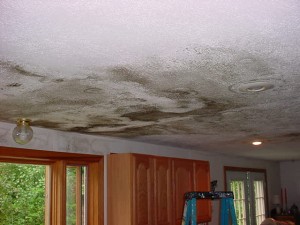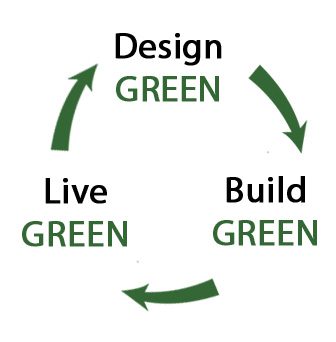Click on the microphone to listen to this podcast!
1) Proper sloping grades, decks, driveways, roofs
- use of gravel and grade drains
2) Gutters
- Most hazardous homeowner project is cleaning gutters: simple to do, but dangerous
- important but most often neglected
- Clogged gutters result in rotten fascias and mold in walls
- Clogged gutter drains result in leaky basements and moldy foundations
- size, type, guards
3) Waterproofing
- Exterior foundation
- Interior systems
4) Drains/Drainage
- Run gutters away from house
- If you don’t use gutters, you can use grade drains

5) Mold
- Where it can happen
- What to do if you get it
6) Dehumidifcation techniques
- Dehumidification system on HVAC unit, Portable dehumidifier, Heat pump, heat pump water heater
7) Rain Gardens
- A rain garden is a planted depression or a hole that allows rainwater runoff from impervious urban areas like roofs, driveways, walkways, parking lots, and compacted lawn areas the opportunity to be absorbed. This reduces rain runoff by allowing stormwater to soak into the ground (as opposed to flowing into storm drains and surface waters which causes erosion, water pollution, flooding, and diminished groundwater).[1] They can be designed for specific soils and climates.[2] The purpose of a rain garden is to improve water quality in nearby bodies of water. Rain gardens can cut down on the amount of pollution reaching creeks and streams by up to 30%.[3]
- Native plants are recommended for rain gardens because they generally do not require fertilizer and are more tolerant of one’s local climate, soil, and water conditions, and attract local wildlife such as native birds. The plants — a selection of wetland edge vegetation, such as wildflowers, sedges, rushes, ferns, shrubs and small trees — take up excess water flowing into the rain garden. Water filters through soil layers before entering the groundwater system. Root systems enhance infiltration, maintain or even augment soil permeability, provide moisture redistribution, and sustain diverse microbial populations involved in biofiltration.[4] Also, through the process of transpiration, rain garden plants return water vapor to the atmosphere.[5] A more wide-ranging definition covers all the possible elements that can be used to capture, channel, divert, and make the most of the natural rain and snow that falls on a property. The whole garden can become a rain garden, and each component of the whole can become a small-scale rain garden in itself.
Construction related water issues:
8) Erosion Control
- Erosion control is the practice of preventing or controlling wind or water erosion in agriculture, land development and construction. Effective erosion controls are important techniques in preventing water pollution and soil loss.
9) Impervious Surfaces
- Impervious surfaces are mainly artificial structures—such as pavements (roads, sidewalks, driveways and parking lots) that are covered by impenetrable materials such as asphalt, concrete, brick, and stone–and rooftops. Soils compacted by urbandevelopment are also highly impervious.
10) Stormwater
- Stormwater is water that originates during precipitation events. It may also be used to apply to water that originates with snowmelt that enters the stormwater system. Stormwater that does not soak into the ground becomes surface runoff, which either flows directly into surface waterways or is channeled into storm sewers, which eventually discharge to surface waters.
- Stormwater is of concern for two main issues: one related to the volume and timing of runoff water (flood control and water supplies) and the other related to potential contaminants that the water is carrying,
11) Low-Impact Development
- LID is an approach to land development (or re-development) that works with nature to manage stormwater as close to its source as possible. LID employs principles such as preserving and recreating natural landscape features, minimizing effective imperviousness to create functional and appealing site drainage that treat stormwater as a resource rather than a waste product. There are many practices that have been used to adhere to these principles such as bioretention facilities, rain gardens, vegetated rooftops, rain barrels, and permeable pavements. By implementing LID principles and practices, water can be managed in a way that reduces the impact of built areas and promotes the natural movement of water within an ecosystem or watershed. Applied on a broad scale, LID can maintain or restore a watershed’s hydrologic and ecological functions. LID has been characterized as a sustainable stormwater practice by the Water Environment Research Foundation and others.

